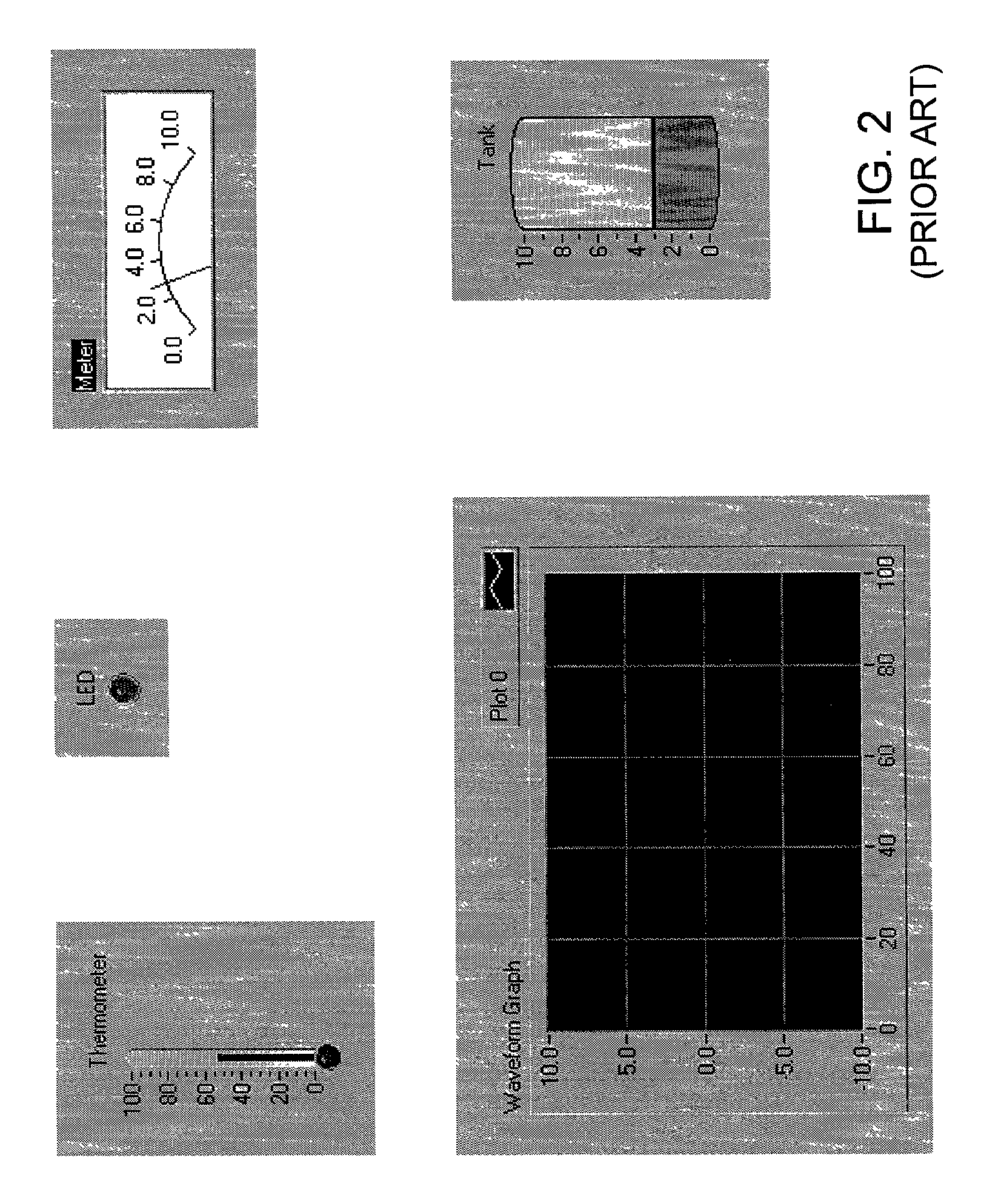Configuring a GUI element to subscribe to data
a technology of gui elements and data, applied in the field of computer program data exchange, can solve the problems of complex situation, lack of consistent mechanism for associating gui elements with different types of data sources and targets, and difficulty in developing a program which associates a gui element with an external data source or targ
- Summary
- Abstract
- Description
- Claims
- Application Information
AI Technical Summary
Benefits of technology
Problems solved by technology
Method used
Image
Examples
Embodiment Construction
Incorporation by Reference
[0069]The following patent applications are hereby incorporated by reference in their entirety as though fully and completely set forth herein:
[0070]U.S. patent application Ser. No. 09 / 185,161 titled, “DataSocket System and Method for Accessing Data Sources Using URLs” filed on Nov. 3, 1998, whose inventor was Paul Austin;
[0071]U.S. patent application Ser. No. 09 / 374,740 titled, “System and Method for Automatically Creating URLs for Accessing Data Sources and Data Targets” filed on Aug. 13, 1999, whose inventors were Paul F. Austin, David W Fuller, Brian H. Sierer, Kurt Carlson, Stephen Rogers and Chris Mayer; and
[0072]U.S. patent application Ser. No. 09 / 518,492 titled, “System and Method for Programmatically Creating a Graphical Program,” filed on Mar. 3, 2000, whose inventors were Ram Kudukoli, Robert Dye, Melanie Jensen, and Yumiko Kawachi.
[0073]U.S. patent application Ser. No. 09 / 546,047 titled, “System and Method for Connecting to and Viewing Live Data...
PUM
 Login to View More
Login to View More Abstract
Description
Claims
Application Information
 Login to View More
Login to View More - R&D
- Intellectual Property
- Life Sciences
- Materials
- Tech Scout
- Unparalleled Data Quality
- Higher Quality Content
- 60% Fewer Hallucinations
Browse by: Latest US Patents, China's latest patents, Technical Efficacy Thesaurus, Application Domain, Technology Topic, Popular Technical Reports.
© 2025 PatSnap. All rights reserved.Legal|Privacy policy|Modern Slavery Act Transparency Statement|Sitemap|About US| Contact US: help@patsnap.com



